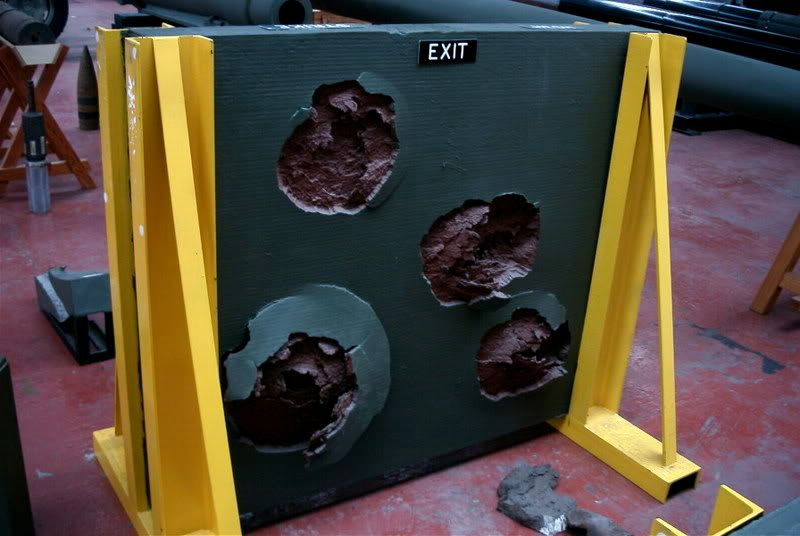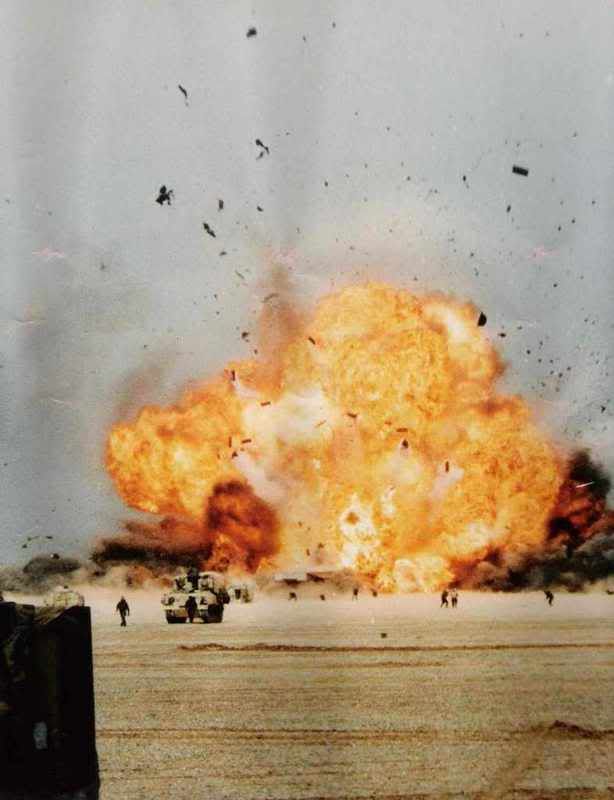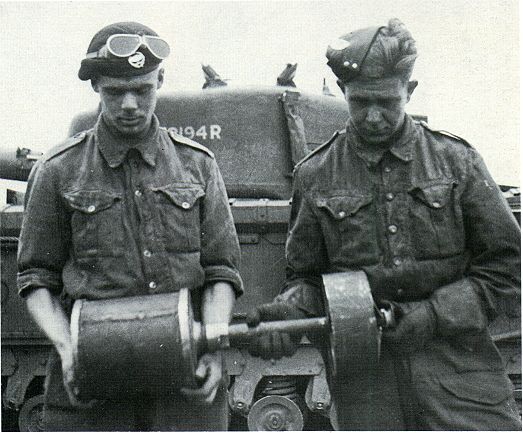Purpose of this blog
Dmitry Yudo aka Overlord, jack of all trades
David Lister aka Listy, Freelancer and Volunteer
Wednesday, March 19, 2014
Sunday, March 16, 2014
Setting the Record Straight
I have not done a technical article for a while, so I'm afraid today's one will be. No stories of daring do today, but normal service will be resumed next week. Sorry if its all a bit boring.
This all came about due to Silentstalker's recent post on the “For The Record” blog about the Armoured Vehicle Royal Engineers (AVRE) tanks. In that article Silent cites me as a reference, but unfortunately he got a few bits and pieces wrong.
Let me hasten to add, this isn't his fault though. He was citing some research I had posted, and I'd gotten some stuff wrong, mainly because of confusion in the exact details (which I will explain later). Chatting to Silent he's suggested I write a piece explaining the ins and outs of a subject he's not fully up to speed on, so here is a more detailed version.
So we'll start in the Second World War. In February 1943 at Hankley Common, a pair of modified Churchill tanks were trialed. To one of the Churchills was fitted a deployable armoured screen that allowed sappers to work under cover and use explosives to demolish a concrete wall. The other tank had its gun replaced with a 290mm spigot mortar. These ideas were refined and built into one hull and became the Churchill AVRE we all know, which served throughout the war. The success of this vehicle cemented the idea of the AVRE in the minds of the British military.
The next step came in August 1944. The British were testing a round called the "Wallbuster". It was a 7.2" calibre gun. The first tests on 5ft of concrete blew a hole straight through it, and blasted fragments 60 feet away. They then fired it at a plate of 150mm thick armour. The impact blew a scab of armour about two feet square weighing 117 lbs off the inside of the armour. They estimated the scab would be travelling at 600 feet per second. This appears to have been the light-bulb moment when the British military fell in love with HESH rounds.
Then after the war the British decided to build a new generation of AVRE's, and the tank selected was the Churchill MKVII, of which the British had a fair old number lying about spare. Initial tests of two weapons were carried out. These were a 7.5" (190mm) and a 6.5" (165mm) gun. It was found the performance of the two guns was almost identical, only the 6.5" gave more room inside the tank, and used smaller rounds, so more ammunition could be carried. The 6.5" gun fired its shells at the low velocity of 850 feet per second and the shell weighed 60 lbs, of which 24 lbs was plastic explosive.
So the Churchill MKVII AVRE was armed with an Ordnance BL 6.5" Mk I. When the British switched to a new method of vehicle and gun numbering these became the FV3903 AVRE and the 165mm L9 Demolition Gun respectively. To try and avoid confusion, from now on I will call the L9 by its earlier name of BL 6.5" Mk I.
Now the US enters the picture, and this is what led to my mistake. On June 21st 1951 the US and UK governments began talks about purchasing the BL 6.5" Mk I. This lead to some misunderstanding, but the upshot of it was the US paid $1,334,000 for 100 guns and ammunition in May 1953.
The US developed two guns from the BL 6.5" Mk I. These were the 165mm T156, which was essentially the same as the British gun, although it did have some minor alterations. Then came the 165mm M57, which was the production version of the previous gun.
Now we skip forward to 1962, and the first prototype of the Centurion AVRE. The Centurion AVRE first entered service in 1963, and eventually replaced the FV3903 entirely in 1965. The Centurion AVRE was armed with a L9A1 165mm gun, which could fire a 64 lbs shell. Its a sign of how far technology had come, as about 60 lbs of that is reported as plastic explosive (more on this in a moment). The L9A1 fired its shell at a higher muzzle velocity than the previous BL 6.5" Mk I. Interestingly the L9A1 could also fire the earlier 6.5" shells as well.
The penetration of the L9A1 is given as 17 feet, or over 5 meters, although I think this is against concrete fortifications. One crewman claims to have seen a Conqueror hit in the turret and the turret was sheared off by the force of the explosion.
The L9A1 was capable of firing this shell about 2000 yards with enough accuracy to hit a bridge support at 800 yards, or a bunker at 1400 yards.
So why the confusion? Well the US brought the L9A1 for their M728 Combat Engineer Vehicle. As before they tweaked it a bit so it was different and called it the M135. But, and this is what is catching everyone out, they continued to fire the old 165mm ammunition that the M57 gun fired. The round fired by the M57 gun, appears to have been a modified version of the 6.5" BL MKI round. With about 30 lbs of explosive in the warhead. The US designated this the M123 HEP.
So this leaves us with a slight issue. There's plenty of authors who give the weight of about 30 lbs of explosive as the L9A1's warhead. They could be right, but they could be mistaking the L9A1 and the M135 shells as one and the same. Of course 60 lbs seems an awfully high percentage of the shell to be explosive.
Simply put it's all very confusing, and myself and others are still trying to work out the details. This is where Silent got his faulty information from. Of course new information is coming to light all the time, so the above might be just as wrong!
Next week we're back to normal, I've got a story involving tanks, heroics and horses, and a battle most of you may well never have heard of lined up to tell you.
This all came about due to Silentstalker's recent post on the “For The Record” blog about the Armoured Vehicle Royal Engineers (AVRE) tanks. In that article Silent cites me as a reference, but unfortunately he got a few bits and pieces wrong.
Let me hasten to add, this isn't his fault though. He was citing some research I had posted, and I'd gotten some stuff wrong, mainly because of confusion in the exact details (which I will explain later). Chatting to Silent he's suggested I write a piece explaining the ins and outs of a subject he's not fully up to speed on, so here is a more detailed version.
So we'll start in the Second World War. In February 1943 at Hankley Common, a pair of modified Churchill tanks were trialed. To one of the Churchills was fitted a deployable armoured screen that allowed sappers to work under cover and use explosives to demolish a concrete wall. The other tank had its gun replaced with a 290mm spigot mortar. These ideas were refined and built into one hull and became the Churchill AVRE we all know, which served throughout the war. The success of this vehicle cemented the idea of the AVRE in the minds of the British military.
The next step came in August 1944. The British were testing a round called the "Wallbuster". It was a 7.2" calibre gun. The first tests on 5ft of concrete blew a hole straight through it, and blasted fragments 60 feet away. They then fired it at a plate of 150mm thick armour. The impact blew a scab of armour about two feet square weighing 117 lbs off the inside of the armour. They estimated the scab would be travelling at 600 feet per second. This appears to have been the light-bulb moment when the British military fell in love with HESH rounds.
 |
| 120mm HESH impacts. A165mm round would be at least 6 times as powerful |
 |
| The handle is removed before loading. |
Now the US enters the picture, and this is what led to my mistake. On June 21st 1951 the US and UK governments began talks about purchasing the BL 6.5" Mk I. This lead to some misunderstanding, but the upshot of it was the US paid $1,334,000 for 100 guns and ammunition in May 1953.
The US developed two guns from the BL 6.5" Mk I. These were the 165mm T156, which was essentially the same as the British gun, although it did have some minor alterations. Then came the 165mm M57, which was the production version of the previous gun.
Now we skip forward to 1962, and the first prototype of the Centurion AVRE. The Centurion AVRE first entered service in 1963, and eventually replaced the FV3903 entirely in 1965. The Centurion AVRE was armed with a L9A1 165mm gun, which could fire a 64 lbs shell. Its a sign of how far technology had come, as about 60 lbs of that is reported as plastic explosive (more on this in a moment). The L9A1 fired its shell at a higher muzzle velocity than the previous BL 6.5" Mk I. Interestingly the L9A1 could also fire the earlier 6.5" shells as well.
The penetration of the L9A1 is given as 17 feet, or over 5 meters, although I think this is against concrete fortifications. One crewman claims to have seen a Conqueror hit in the turret and the turret was sheared off by the force of the explosion.
 |
| A Centurion AVRE when a freak accident caused the Ammunition to ignite. |
So why the confusion? Well the US brought the L9A1 for their M728 Combat Engineer Vehicle. As before they tweaked it a bit so it was different and called it the M135. But, and this is what is catching everyone out, they continued to fire the old 165mm ammunition that the M57 gun fired. The round fired by the M57 gun, appears to have been a modified version of the 6.5" BL MKI round. With about 30 lbs of explosive in the warhead. The US designated this the M123 HEP.
So this leaves us with a slight issue. There's plenty of authors who give the weight of about 30 lbs of explosive as the L9A1's warhead. They could be right, but they could be mistaking the L9A1 and the M135 shells as one and the same. Of course 60 lbs seems an awfully high percentage of the shell to be explosive.
 |
| L9A1 165mm shell. The Pebble beside it is a 2Pdr shell. |
Next week we're back to normal, I've got a story involving tanks, heroics and horses, and a battle most of you may well never have heard of lined up to tell you.
Subscribe to:
Comments (Atom)


